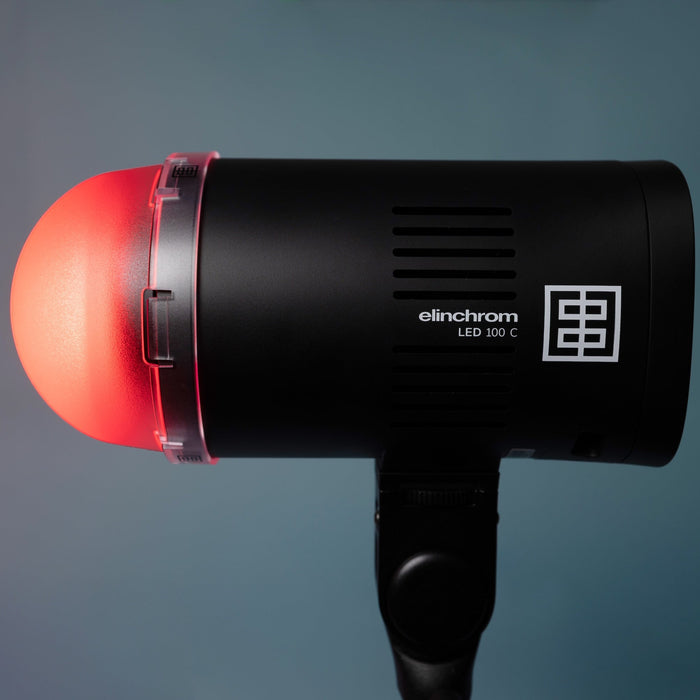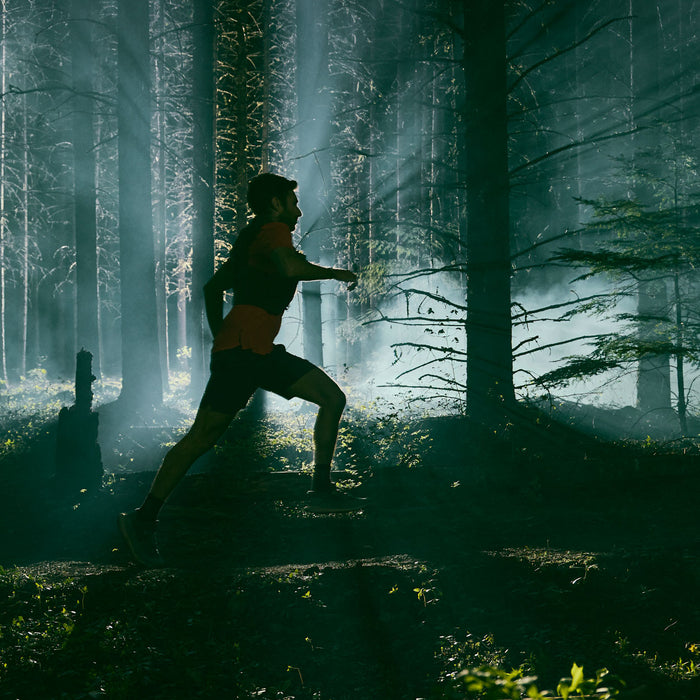
Ditch the Lab? DIY 35mm Film Scanning with Valoi Easy35
by Joe Duggan
The Valoi Easy35 Film Scanner make’s home scanning your 35mm film as fast and easy as it can possibly be, and it quickly saves you money when compared to using a lab. That's the claim! In this blog, we put the Valoi easy35 to the test to see if it’s the right choice for film enthusiasts looking to save on lab fees and gain control over their scans. This blog covers setup, costs, and comparisons with lab scans, so you can decide if the Valoi easy35 is the tool for you.

Before we get stuck in, here's a quick run down of some of the Valoi easy35's key features:
- Plug-and-play scanning at home
- Scan up to 10x faster than with a flatbed scanner
- Super compact: fits in a small camera bag
- Professional-grade film holders for speed and quality
- Built-in professional-grade light source for convenience and consistent quality
- Replaceable light source for a long lifespan
- High-quality materials for a durable product
- Modular holders for formats smaller than 35mm
- No copy stand or tripod needed, saving space and money
- Compatible with most macro lenses, including those with filter threads from 39mm to 67mm
Comparing Costs
Let’s start by breaking down some of the costs of using a lab. It cost me £2.99 to post a film (which is cheaper than driving or getting public transport). Developing the scans worked out £10 for a medium quality with a return postage of £2.00. Which makes the overall cost for one roll £14.99. Retailing at £199, the Valoi easy35 might seem like a significant investment, but in less than 14 rolls of film the Valoi will have paid for itself. One of the main additional benefits to you is to be able to rescan your older films at a high quality whenever you want.
Setting up the Valoi easy35
To start scanning with the Vaoli easy35 all you’ll need is a digital camera of your choice and a macro lens. I used a Fujifilm X-T1 and a 30-year-old Nikon 55mm macro lens to scan my photos below, you could probably extract a tiny bit extra detail from 35mm with a higher spec camera. We would recommend that any digital camera over 16MP is more than enough for a good scan.
All of the images are shot on my trusty analog film camera the Nikon F3 with a 50mm lens the Black and white film is developed at home in Ilford chemicals.
Comparing Scans: Lab vs Valoi easy35
Scan 1: Shot on Harman Phoenix


Harman Phoenix is an experimental film with the unusual characteristics of being punchy, very warm in tone, and with easily over exposed highlights. In this example, being in control of the scanning process, meant I could get a little more out of the image.
Scan 2: Shot on Cinestill 400D


In this image, shot on Cinestill 400D, you can see the lab scan has less detail and dynamic range than the Valoi image. The latter scan hasn’t been edited beyond converting the images from a negative using Negative lab pro app in lightroom (the best tool for conversions in my opinion).
There are a lot more adjustments you can make to the image as you have more information to play with but for the sake of this blog, I have kept it as neutral as possible.
Scan 3: Shot on Shot on Cinestill 400D
This third set shows another issue with my lab scans, a bit of fluff in the top left corner. The lab did offer to rescan, but I decided against as didn’t want to send the negative back back in to do so.


In these images it’s easy to see there is a lot more detail in the sky and in the shadow areas with a more natural colour look.
Scan 4: Shot on Shot on Cinestill 400D


This image was a little under exposed so the lab scan struggles to draw out the detail and gets a little muddy compared to the Valoi scan straight from camera.
Scan 5: Shot on Shot on Cinestill 400D


Again, the Valoi scan gave me a more neutral colour and detail in the foliage.
Scan 6: Shot on Shot on Cinestill 400D


The Valoi scan holds better colour in the highlights and has more of a 3D pop, you can see the depth of the image better with a clearer scan.
Scan 7: Shot on Ilford HP5

A bonus black and white image shot on a very old out of date roll of Ilford HP5 developed at home on Ilford chemicals. Scanning with the Valoi gave me a plesantly surprising result as it allowed me to get any information out of the negatives which looked really dark after developing.
Crafting Your Unique Film Look with Valoi easy35
Scan qualities and the ‘look’ you wanted or ended up with are subjective, and everyone's personal tastes are different. You might have found the ‘perfect’ lab for you that produces the scans exactly how you like them. However using the valoi does make it easier to get the look you had in mind, or even experiment with different looks, as you are in control of the scanning process yourself, so it would make a perfect add on to the enthusiast who wants to keep costs as low as possible over a short period of time whilst maximising flexibility and gaining satisfaction over the end results.
To learn more about the Valoi easy35, or to buy one, please visit our website HERE. To shop our range of 35mm, medium format or sheet film, including the film stock used in this article, please visit our website HERE.
If you'd like to hear more about my experiences using the Valoi easy35, you can speak to me at TFC London by calling 02078375649.
More from
Product title
Liquid error (snippets/product-grid-item line 470): comparison of Integer with String failedProduct title
Liquid error (snippets/product-grid-item line 470): comparison of Integer with String failedProduct title
Liquid error (snippets/product-grid-item line 470): comparison of Integer with String failedProduct title
Liquid error (snippets/product-grid-item line 470): comparison of Integer with String failedProduct title
Liquid error (snippets/product-grid-item line 470): comparison of Integer with String failedProduct title
Liquid error (snippets/product-grid-item line 470): comparison of Integer with String failedProduct title
Liquid error (snippets/product-grid-item line 470): comparison of Integer with String failedProduct title
Liquid error (snippets/product-grid-item line 470): comparison of Integer with String failedProduct title
Liquid error (snippets/product-grid-item line 470): comparison of Integer with String failedProduct title
Liquid error (snippets/product-grid-item line 470): comparison of Integer with String failedProduct title
Liquid error (snippets/product-grid-item line 470): comparison of Integer with String failedProduct title
Liquid error (snippets/product-grid-item line 470): comparison of Integer with String failedProduct title
Liquid error (snippets/product-grid-item line 470): comparison of Integer with String failedProduct title
Liquid error (snippets/product-grid-item line 470): comparison of Integer with String failedProduct title
Liquid error (snippets/product-grid-item line 470): comparison of Integer with String failedProduct title
Liquid error (snippets/product-grid-item line 470): comparison of Integer with String failedProduct title
Liquid error (snippets/product-grid-item line 470): comparison of Integer with String failedProduct title
Liquid error (snippets/product-grid-item line 470): comparison of Integer with String failedProduct title
Liquid error (snippets/product-grid-item line 470): comparison of Integer with String failedProduct title
Liquid error (snippets/product-grid-item line 470): comparison of Integer with String failedProduct title
Liquid error (snippets/product-grid-item line 470): comparison of Integer with String failedProduct title
Liquid error (snippets/product-grid-item line 470): comparison of Integer with String failedProduct title
Liquid error (snippets/product-grid-item line 470): comparison of Integer with String failedProduct title
Liquid error (snippets/product-grid-item line 470): comparison of Integer with String failedProduct title
Liquid error (snippets/product-grid-item line 470): comparison of Integer with String failedMore from The Flash Centre
-

AGO Film Processor - Automatic For The People
Read nowby Huw Meredith No, this isn’t a very belated review of the 1992 REM album, but a look at the new AGO Time Compensation Film Processor which is a way to get more consistent results when developing film for beginners...
-

Elinchrom LED 100 C - First Look Unboxing and FAQ
Read nowIn this blog, we unbox the Elinchrom LED 100 C, Elinchrom's debut in continuous lighting, and explore what makes it stand out. We’ll dive into its key features, performance, and answer any questions to help you decide if it’s the right light for you. Whether you're a photographer or videographer, TFC is here to help you make informed decisions about your gear.
-

Behind the Scenes: Night Running
Learn how photographer Ben Girardi used Elinchrom lights, including the Elinchrom THREE and ONE, to create striking trail running images in a foggy forest. Explore his innovative setup with artificial fog, precise lighting techniques, and collaborative teamwork.Read now



